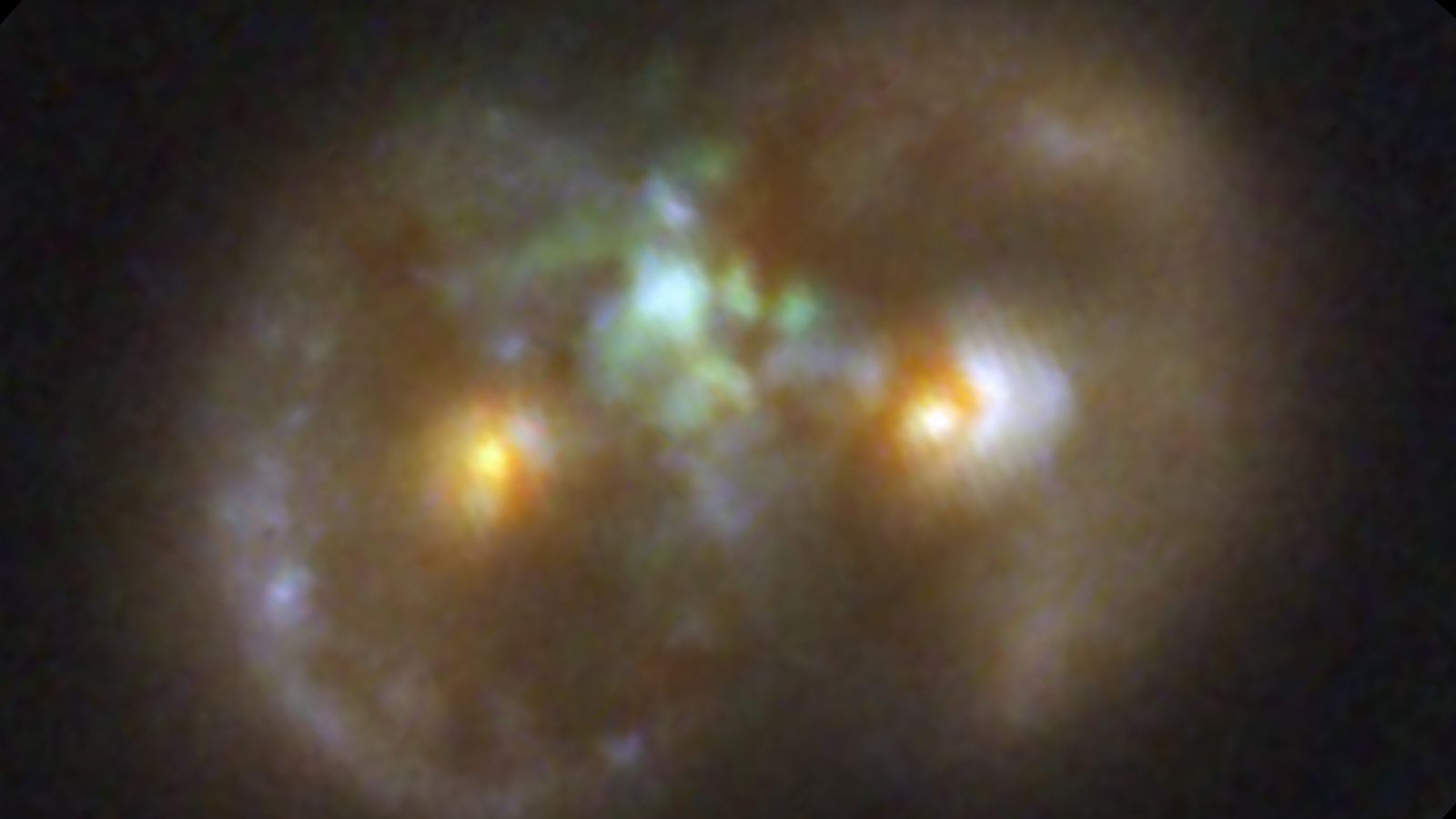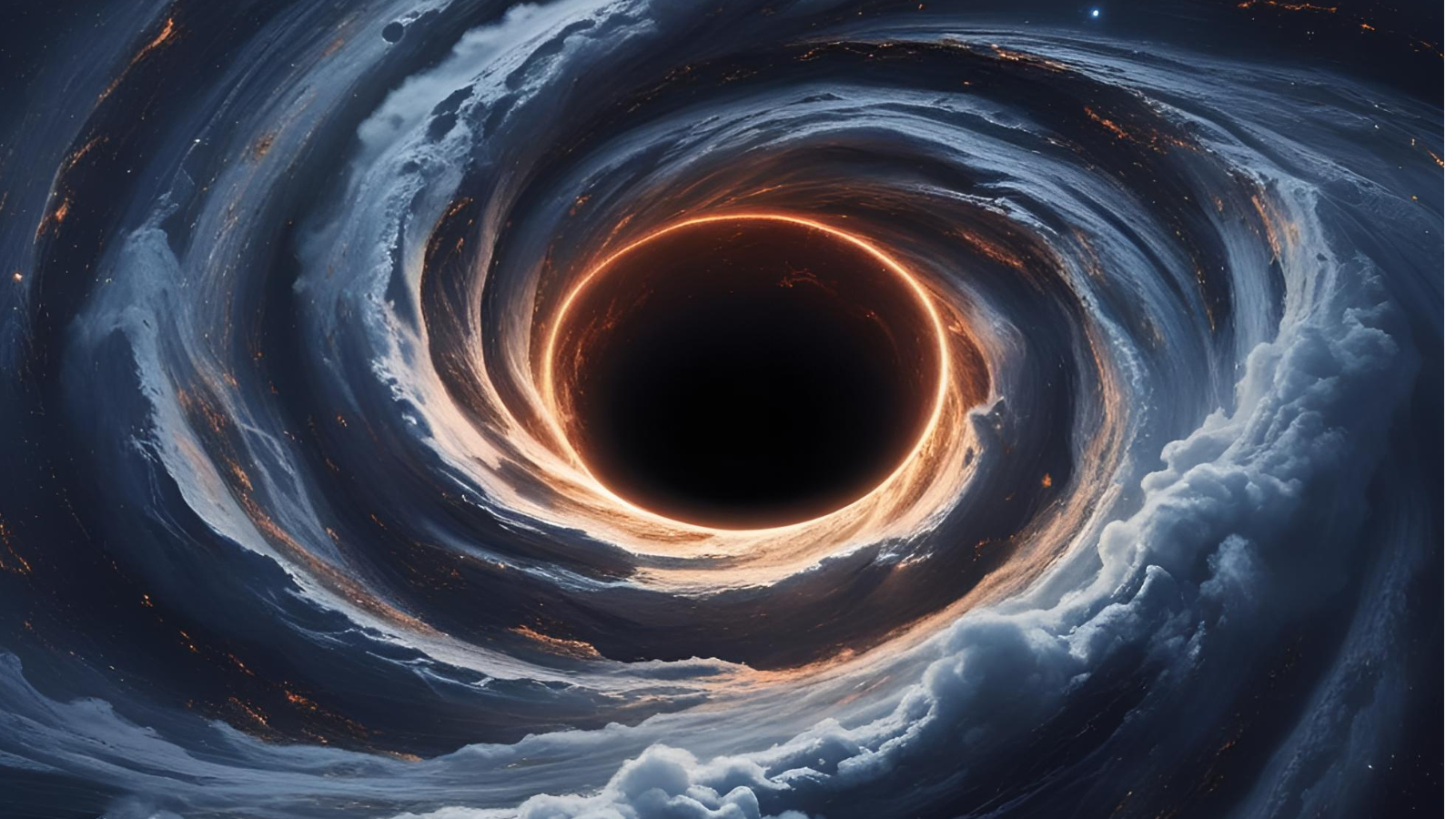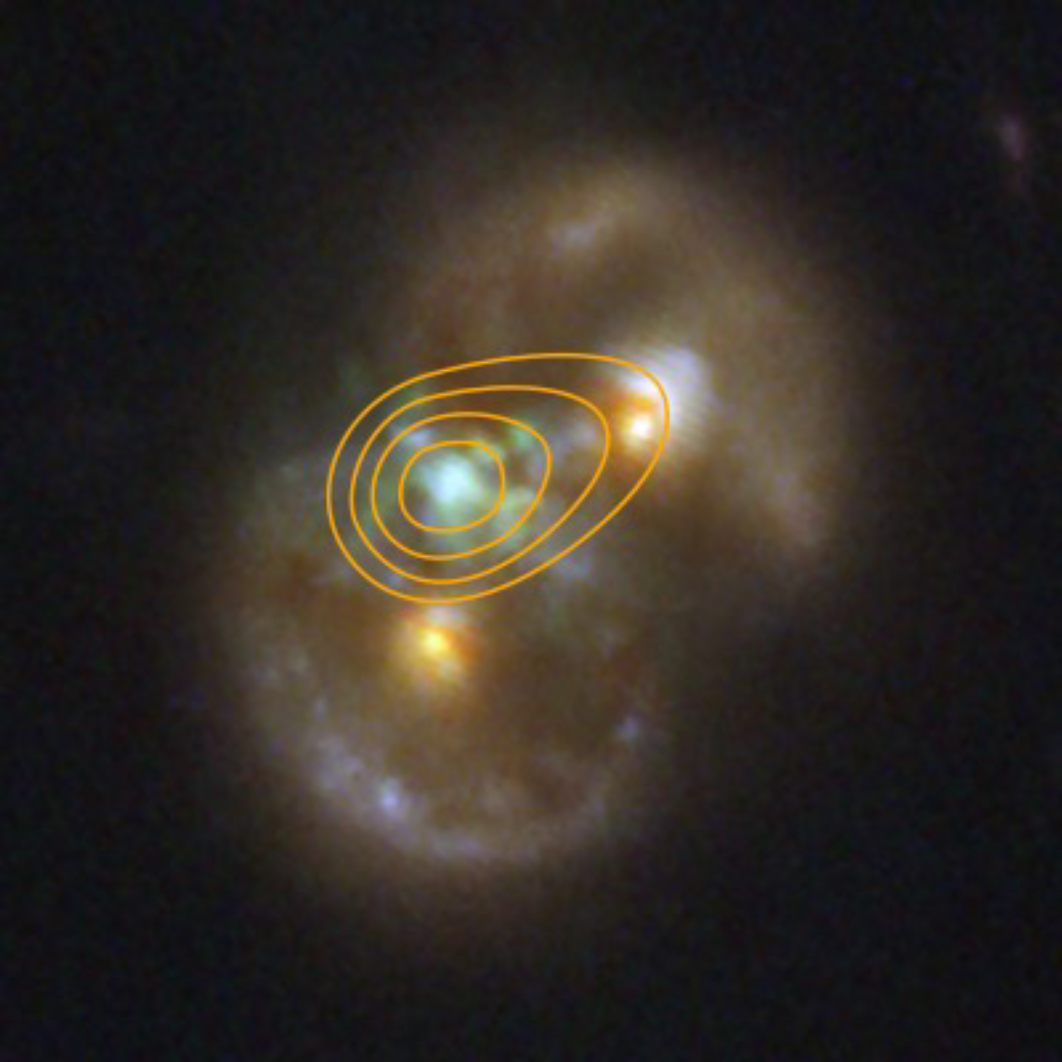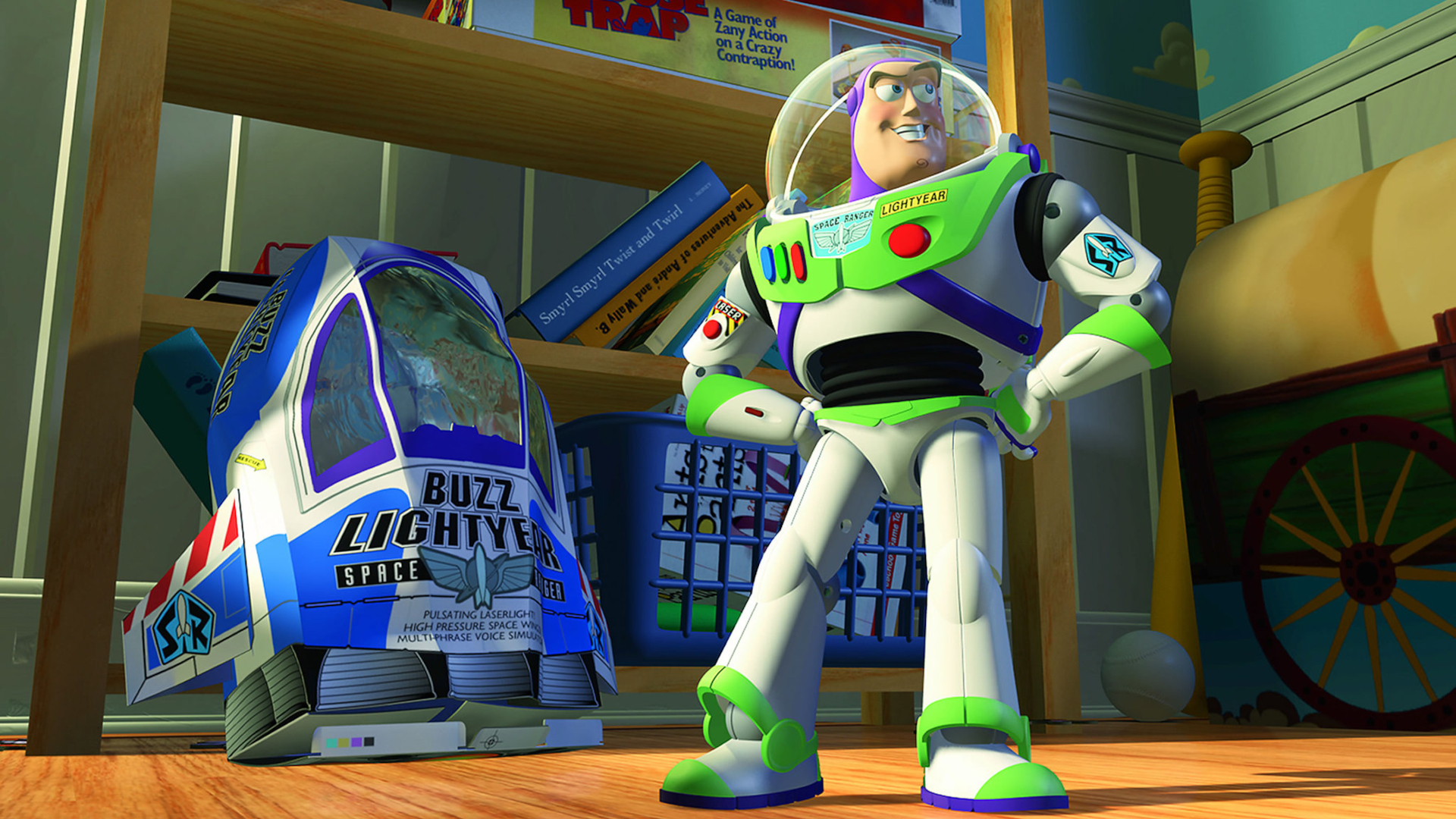JWST finds unusual black hole in the center of the Infinity Galaxy: 'How can we make sense of this?'
"The biggest surprise of all was that the black hole was not located inside either of the two nuclei but in the middle. We asked ourselves: How can we make sense of this?"

Using the James Webb Space Telescope (JWST), astronomers have discovered an oddball galaxy, dubbed the Infinity Galaxy, that could be host to a "direct collapse black hole." That is, a black hole originally created directly from a vast cloud of collapsing gas and dust rather than a dying star.
The Infinity Galaxy gets its name from the fact that its shape resembles an infinity symbol (a sideways 8) with two red lobes or "nuclei." This shape is thought to have arisen because the Infinity Galaxy was formed as two disk galaxies engaged in a head-on collision.
What makes this highly unusual is the fact that this black hole sits between the two colliding galaxies in a vast cloud of gas, rather than in either respective nucleus. From its perch between these galaxies, the black hole now feeds greedily on that gas, but researchers think that same cloud also once birthed it. That would make this the first observational evidence of the direct collapse pathway of black hole birth.
The researchers behind these findings uncovered the Infinity Galaxy while examining images from the JWST's 255-hour treasury COSMOS-Web survey. In addition to the suspected direct collapse black hole that sits between the colliding galaxies, the team found that each nucleus of those galaxies also contains a supermassive black hole!
"Everything is unusual about this galaxy. Not only does it look very strange, but it also has this supermassive black hole that's pulling a lot of material in," team leader and Yale University researcher Pieter van Dokkum said in a statement. "The biggest surprise of all was that the black hole was not located inside either of the two nuclei but in the middle.
"We asked ourselves: How can we make sense of this?"
van Dokkum explained that finding a black hole not in the nucleus of a massive galaxy isn't, in itself, unusual. What is strange is the question of how that black hole got there.
Breaking space news, the latest updates on rocket launches, skywatching events and more!
"It likely didn't just arrive there, but instead it formed there," van Dokkum said. "And pretty recently. In other words, we think we're witnessing the birth of a supermassive black hole – something that has never been seen before."
This discovery could solve an intriguing mystery regarding the observation of supermassive black holes with masses millions or billions of times that of the sun, less than 1 billion years after the Big Bang.
Black holes could skip stellar deaths and supernovas
Since it began operating three years ago, the JWST has delivered something of a conundrum to cosmologists; observations that show supermassive black holes seem common as early as 500 million years after the Big Bang.
That's a problem because it was previously proposed that supermassive black holes form through successive mergers of smaller black holes. However, beginning this process with so-called stellar-mass black holes would require waiting for the first generation of stars to form, live their lives, then collapse in supernova explosions. The resulting black holes would have to undergo a series of mergers and periods of intense feeding upon interstellar gas and dust.
This process would take at least a billion years to "grow" a black hole to supermassive status. Thus, seeing a multitude of supermassive black holes before the universe was 1 billion years old is problematic.
That is, unless these bodies got a head start by skipping the stellar life and birth stage of this process.
"How supermassive black holes formed is a long-standing question. There are two main theories, called 'light seeds' and 'heavy seeds.' In the light seed theory, you start with small black holes formed when a star's core collapses and the star explodes as a supernova," van Dokkum explained. "That might result in a black hole weighing up to about 1,000 suns. You form a lot of them in a small space, and they merge over time to become a much more massive black hole."
As mentioned above, the problem with that is the time this process would take and the JWST's discovery of incredibly massive black holes at early stages of our 13.8 billion-year-old universe.
Black holes could have heavy seeds
Alternatively, the heavy seed theory sees supermassive black hole growth kickstarted with a much larger black hole, maybe up to one million times the mass of the sun. This forms directly from the collapse of a large gas cloud.
"You immediately form a giant black hole, so it's much quicker. However, the problem with forming a black hole out of a gas cloud is that gas clouds like to form stars as they collapse rather than a black hole, so you have to find some way of preventing that. It's not clear that this direct-collapse process could work in practice," van Dokkum said. "By looking at the data from the Infinity Galaxy, we think we've pieced together a story of how this could have happened here."
The researchers suggest that as the two disk galaxies collided, a ring structure of stars, visible in the JWST image, was formed. During this collision, gas within these two galaxies would have been shocked and compressed. They think this compression may have been so extreme that it formed a "dense knot" in the gas, which then collapsed into a black hole.
As van Dokkum explained, there is a wealth of circumstantial evidence for this formation channel for the black hole in the Infinity Galaxy.
"We observe a large swath of ionized gas, specifically hydrogen that has been stripped of its electrons, that's right in the middle between the two nuclei, surrounding the supermassive black hole," he continued. "We also know that the black hole is actively growing – we see evidence of that in X-rays from NASA's Chandra X-ray Observatory and radio from the Very Large Array. Nevertheless, the question is, did it form there?"
There are two possible explanations that don't involve a direct collapse black hole forming at the intersection of these merged galaxies.
"First, it could be a runaway black hole that got ejected from a galaxy and just happens to be passing through," van Dokkum said. "Second, it could be a black hole at the center of a third galaxy in the same location on the sky. If it were in a third galaxy, we would expect to see the surrounding galaxy unless it were a faint dwarf galaxy. However, dwarf galaxies don't tend to host giant black holes.
"If the black hole were a runaway, or if it were in an unrelated galaxy, we would expect it to have a very different velocity from the gas in the Infinity Galaxy."
To test this, the team intends to measure the velocity of the gas and the velocity of the black hole and compare them. Should those velocities be close, within around 30 miles per second (50 kilometers per second), then van Dokkum asserts that it will be hard to argue that the black hole is not formed from that gas.
"Our preliminary results are exciting. First, the presence of an extended distribution of ionized gas between the two nuclei is confirmed. Second, the black hole is beautifully in the middle of the velocity distribution of this surrounding gas, as expected if it formed there. This is the key result that we were after!" van Dokkum continued. "Third, as an unexpected bonus, it turns out that both galaxy nuclei also have an active supermassive black hole."
Though the team can't say definitively that they discovered a direct collapse black hole, they can state with confidence that this JWST data strengthens the case for this being a newborn black hole, while eliminating some of the counter-explanations to the direct collapse pathway.
"This system has three confirmed active black holes: two very massive ones in both of the galaxy nuclei, and the one in between them that might have formed there," van Dokkum said. "We will continue to pore through the data and investigate these possibilities."

Robert Lea is a science journalist in the U.K. whose articles have been published in Physics World, New Scientist, Astronomy Magazine, All About Space, Newsweek and ZME Science. He also writes about science communication for Elsevier and the European Journal of Physics. Rob holds a bachelor of science degree in physics and astronomy from the U.K.’s Open University. Follow him on Twitter @sciencef1rst.
You must confirm your public display name before commenting
Please logout and then login again, you will then be prompted to enter your display name.


